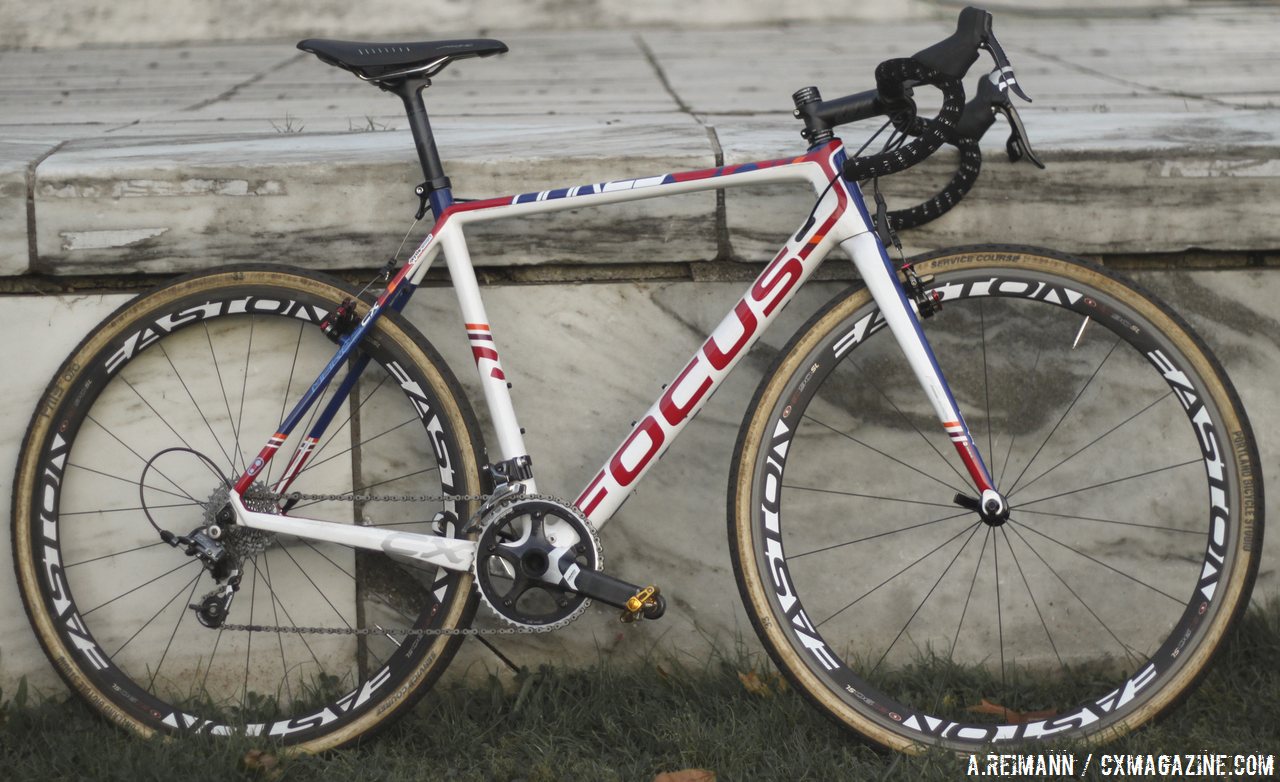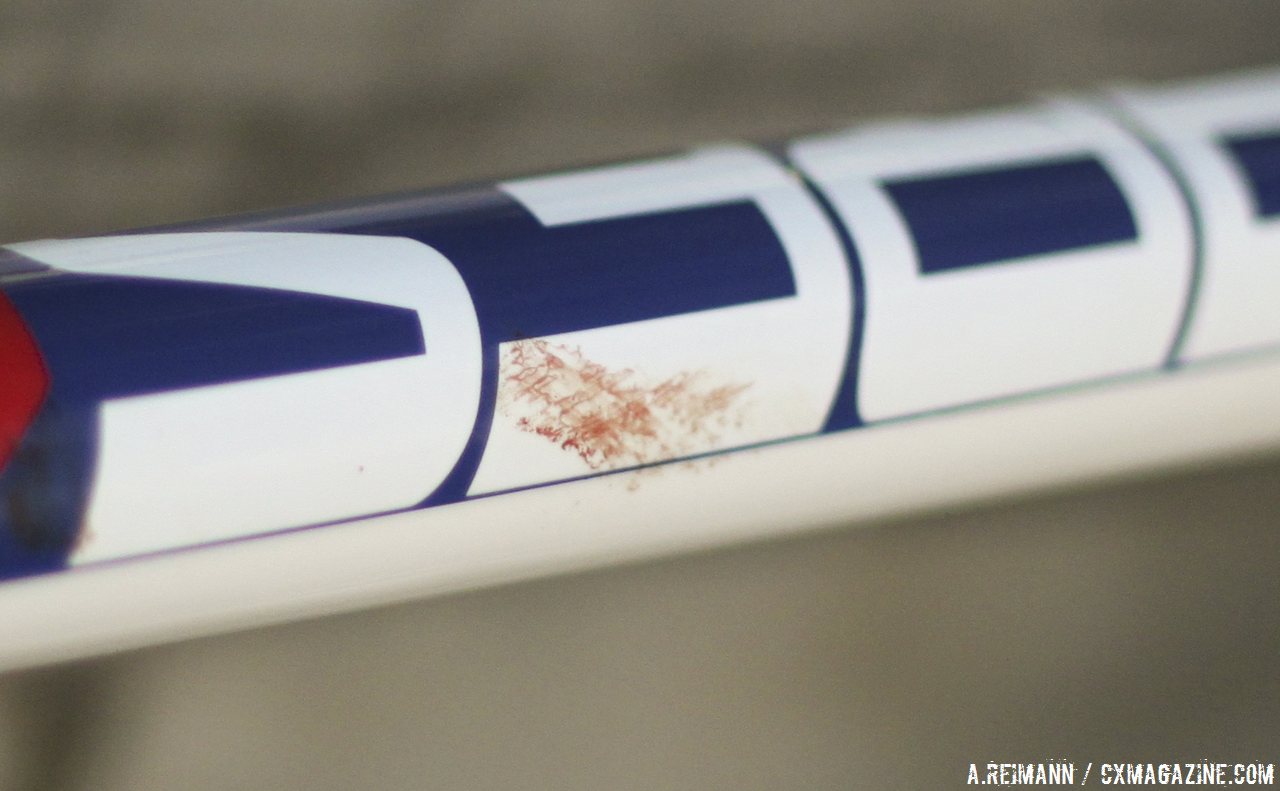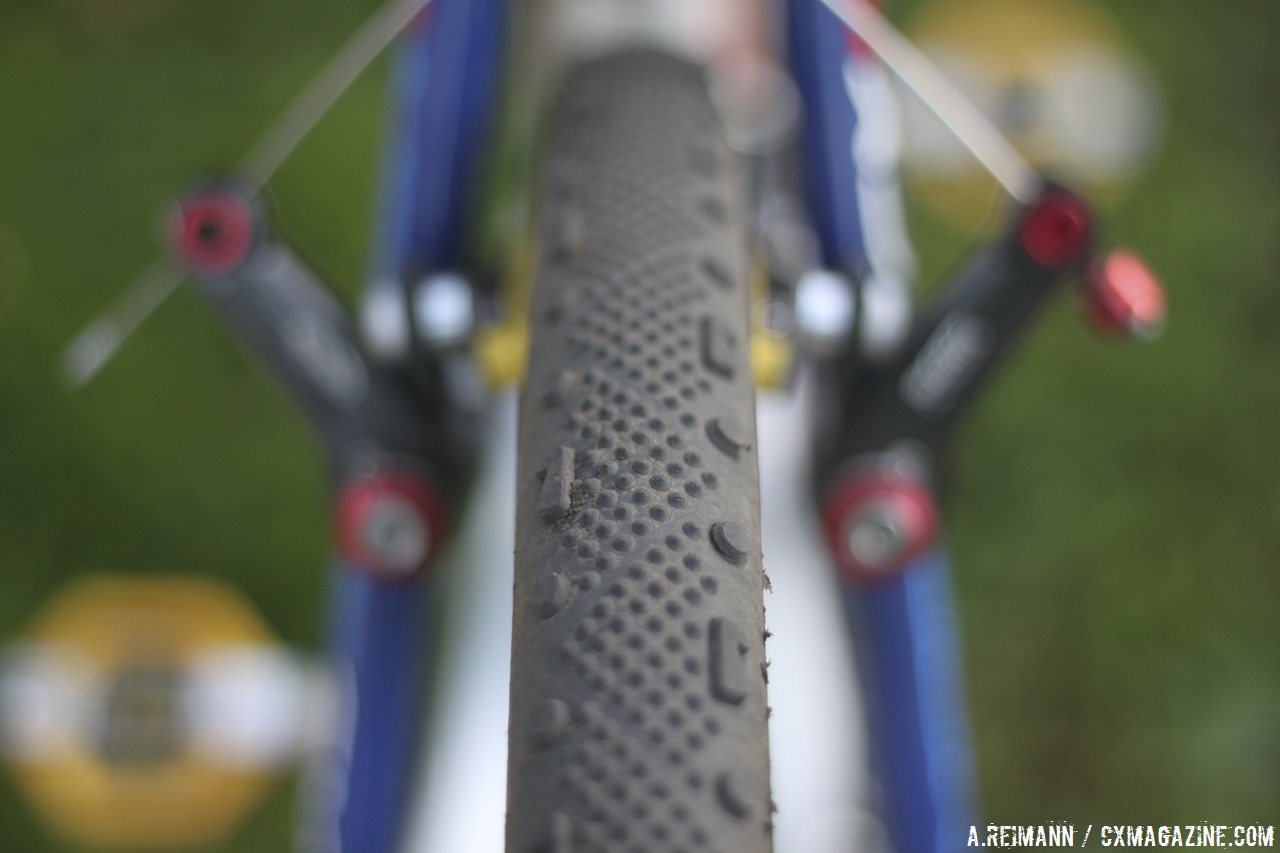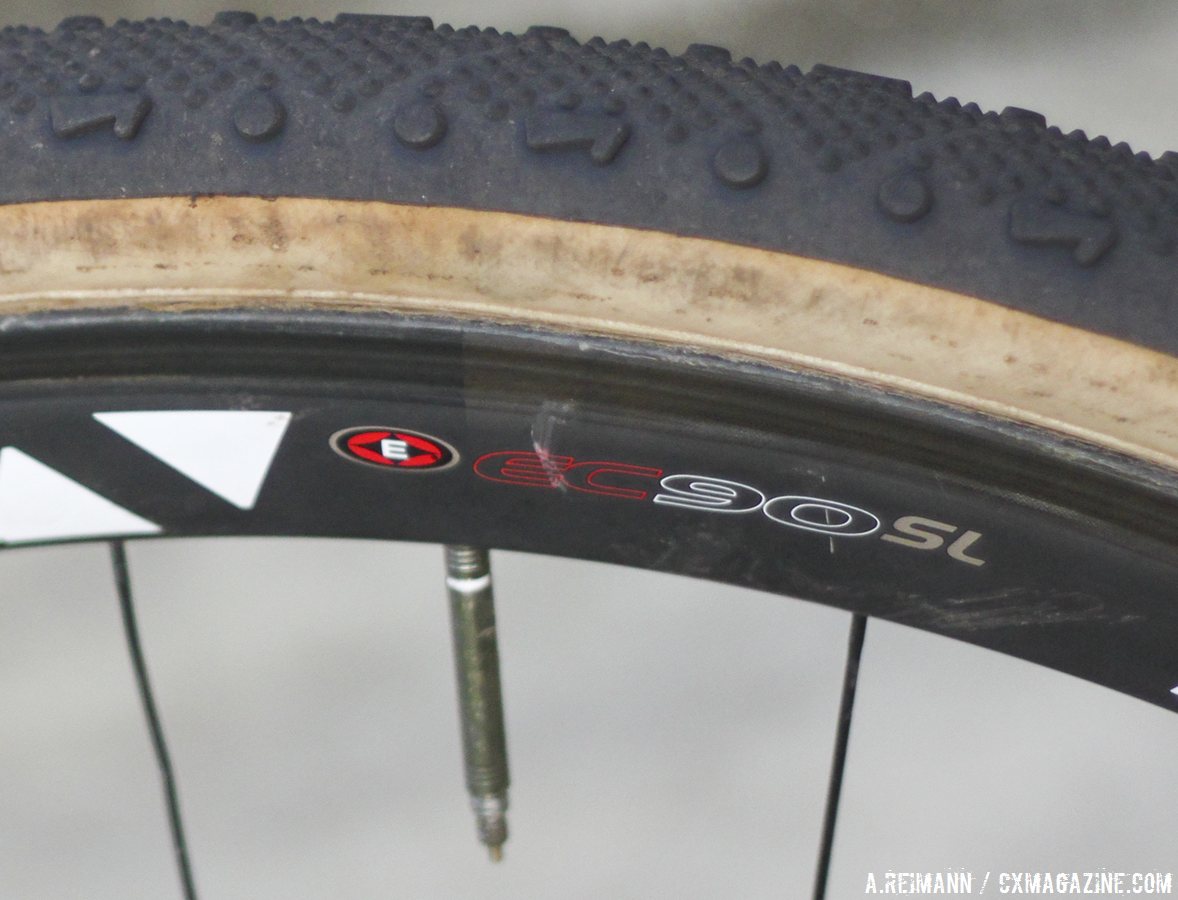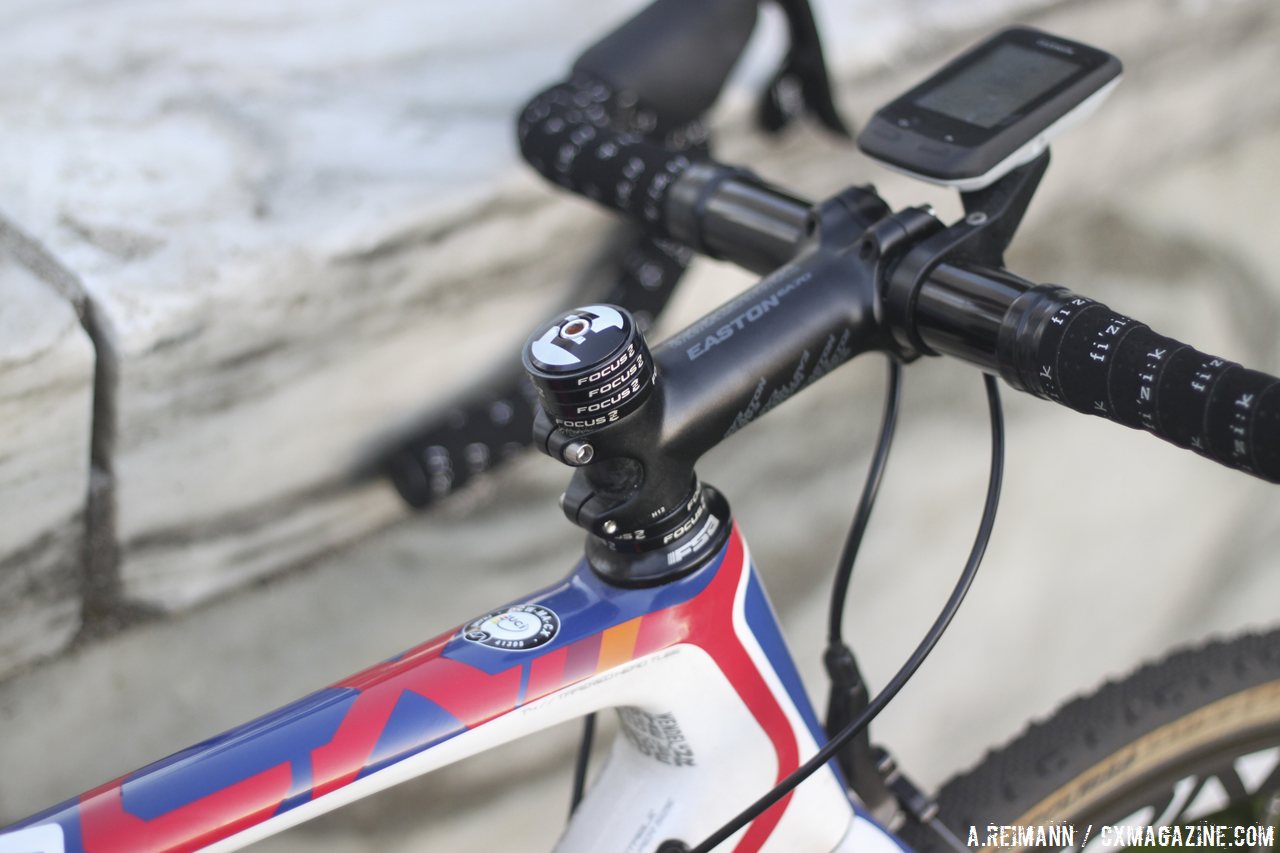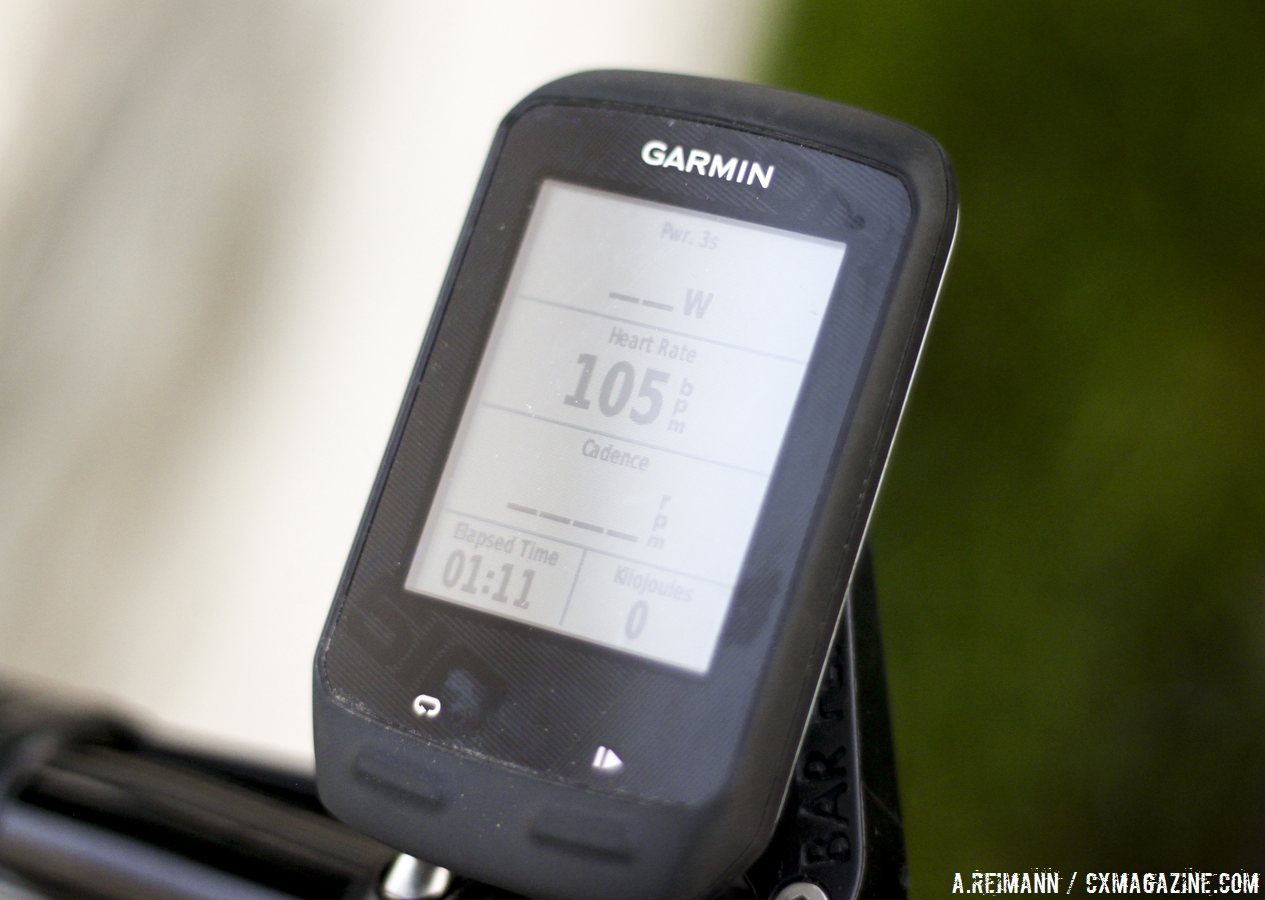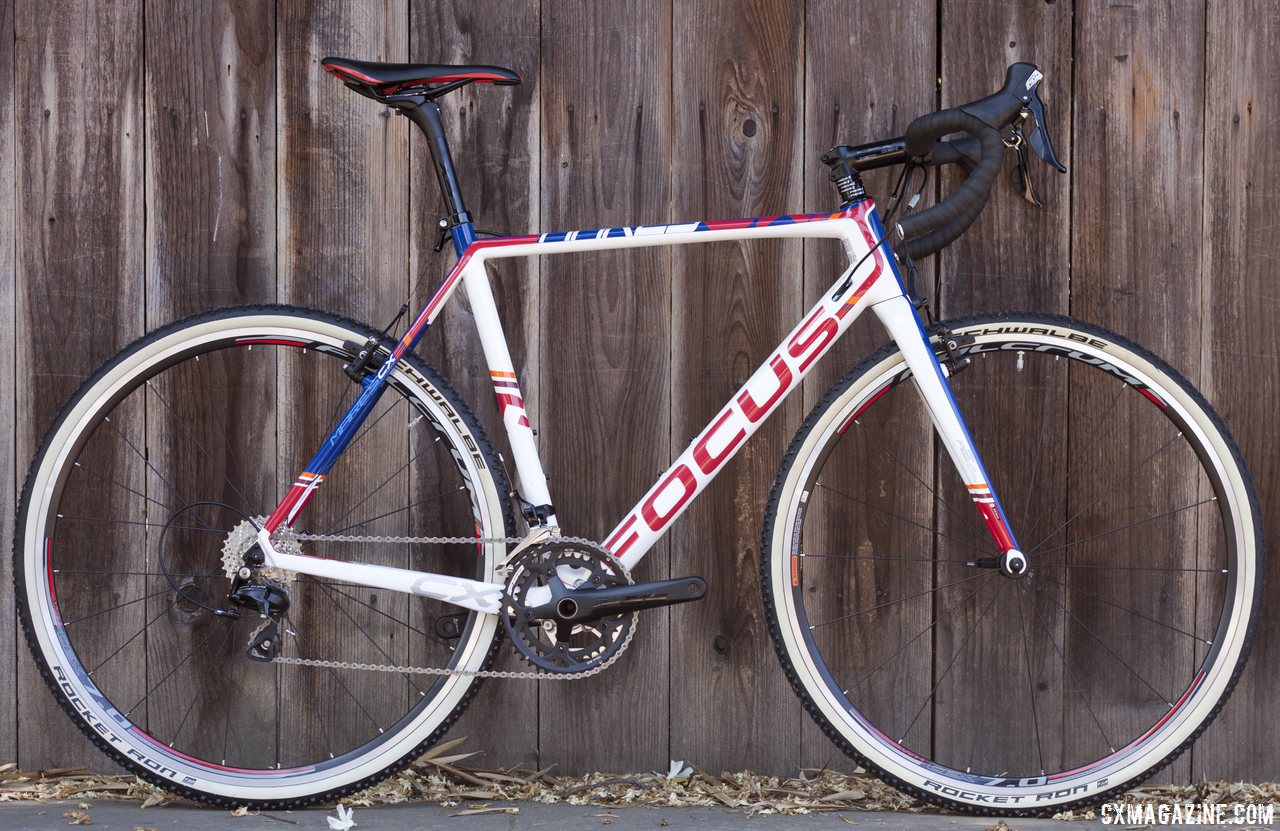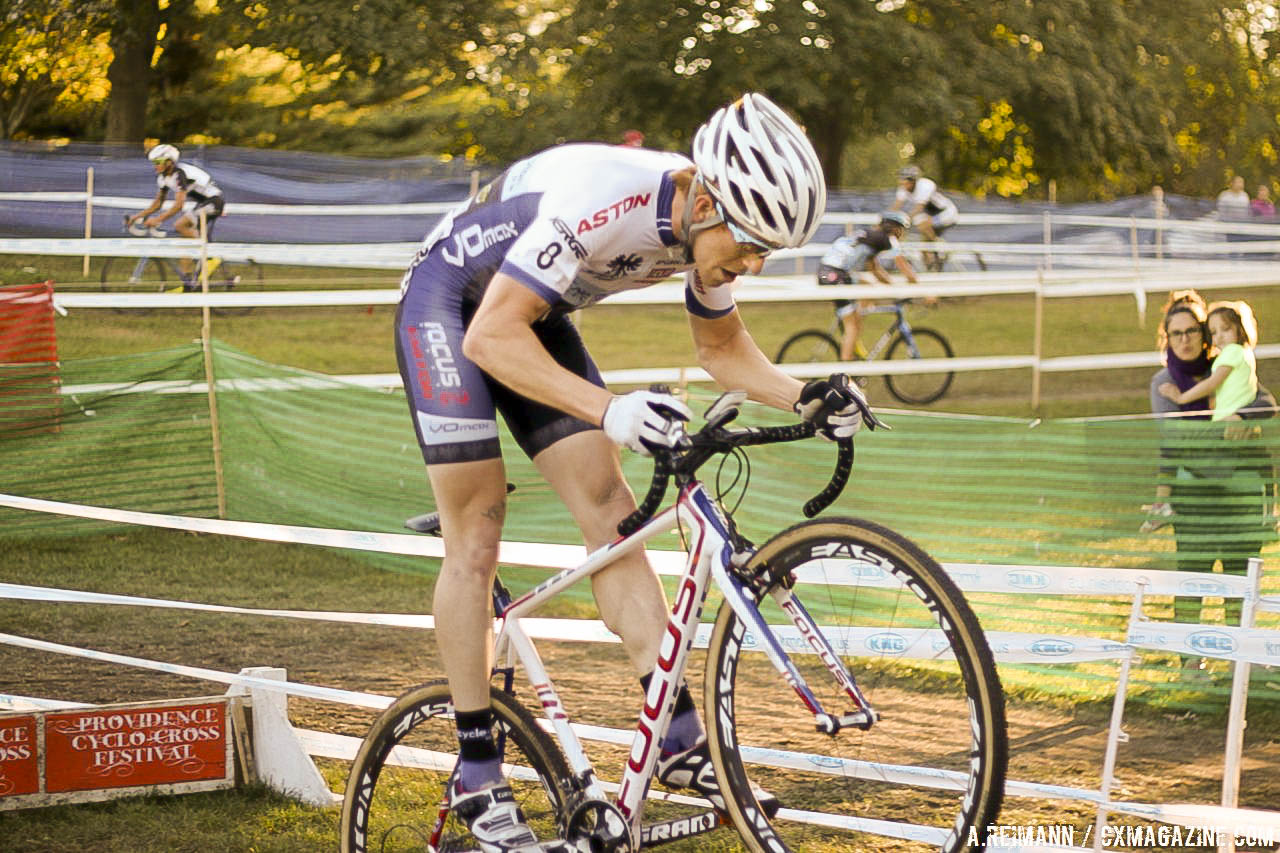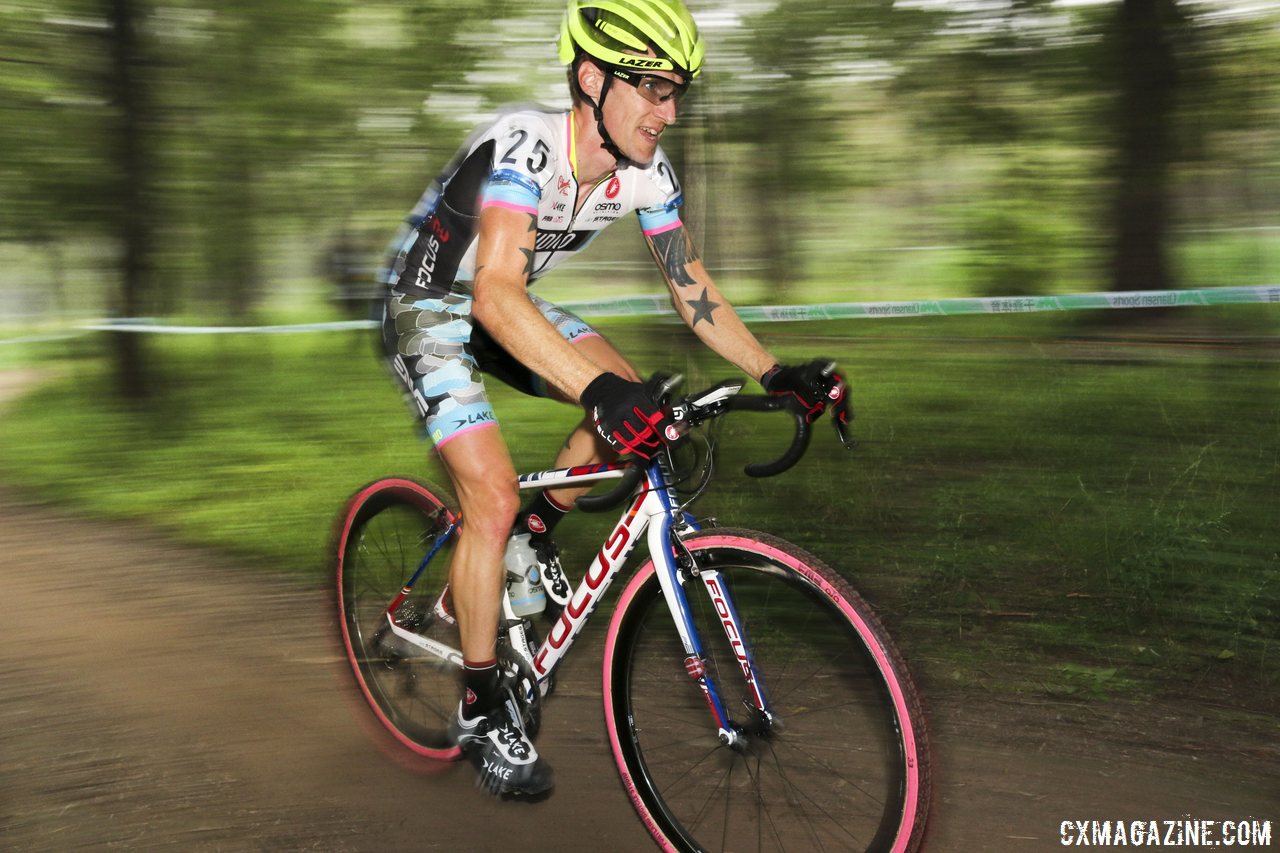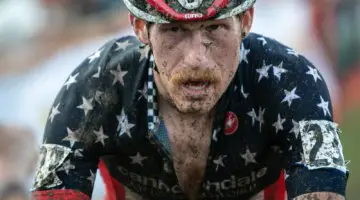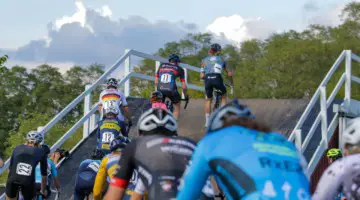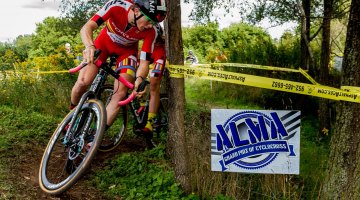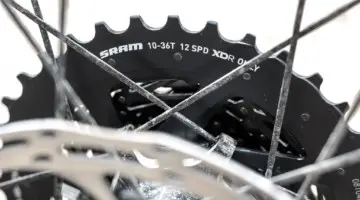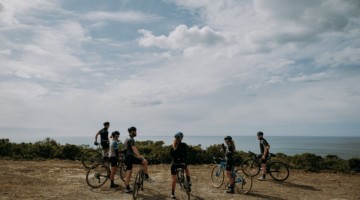PROVIDENCE, RI – Last Sunday, in the UCI C2 race at the KMC Cyclo-Cross Festival, Stephen Hyde self-admittedly had the best ride of his career to take the win. Attacking early in the race, he pushed the tempo of the field, gaping his chasers by a full thirty seconds before fending them off at the finish line.
Hyde’s JAM Fund Focus Mares might be better than the bikes people might use to try cyclocross for the first time, but Hyde’s rig is far from having all the bells and whistles that can be seen on many elite-level bikes. We got a First Look of the new Focus Mares this year at Sea Otter with Jeremy Powers, and later saw the Sonic Cyclocross Team using it to compete in China’s UCI race.
Today we will look at the build that can still pull off a win in one of the most competitive fields in the United States.
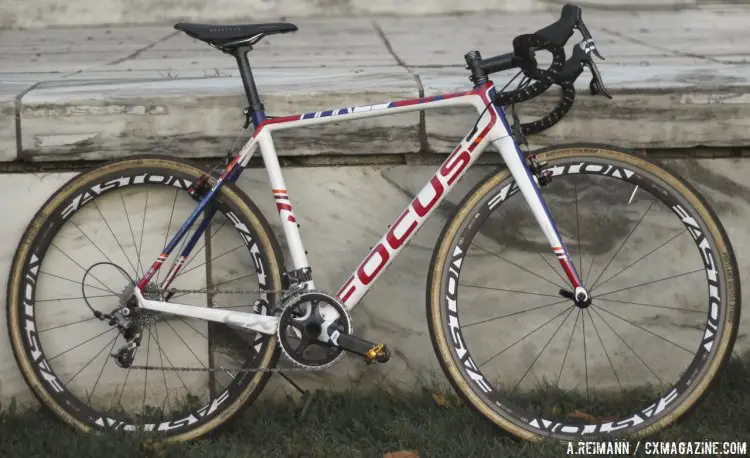
Stephen Hyde’s Focus Mares proudly graces Providence’s Hall of Music trophy staircase. © Andrew Reimann
When viewing an elite, SRAM-equipped bike in the context of 2014, it’s uncommon to see a Force setup with a front derailleur (although during our interview with Helen Wyman at Charm City, she preferred sticking to the double-ring with the technical courses of Europe on the horizon). To add to the intrigue, Hyde opts to run his chainrings a bit narrower, going with what appears to be a 44/36. Like Jeremy Powers, Hyde uses Crank Bros. Candy 11 pedals.
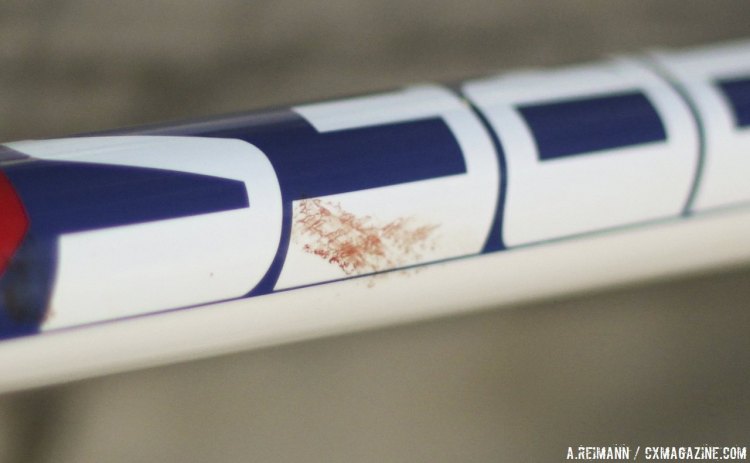
Stephen Hyde looked surprised that his knee was bleeding after the race, and his bike carries the temporary proof of his efforts. © Andrew Reimann
Although this was not Stephen Hyde’s first UCI win (he has found success at Charm City in recent years), his victory at the KMC Cyclo-Cross Festival might be his crowning achievement.
His saddle is the long and narrow Fizik Arione, and his handlebars sport a matching tape with the Fizik branding. Another noticeable difference in his Force levers is the lack of raised hoods of SRAM’s HydroR braking system. The course in Roger William’s Park includes plenty of 180 degree turns and off-camber sections, but Hyde’s cantilevers appeared to treat him well in both rain and shine.
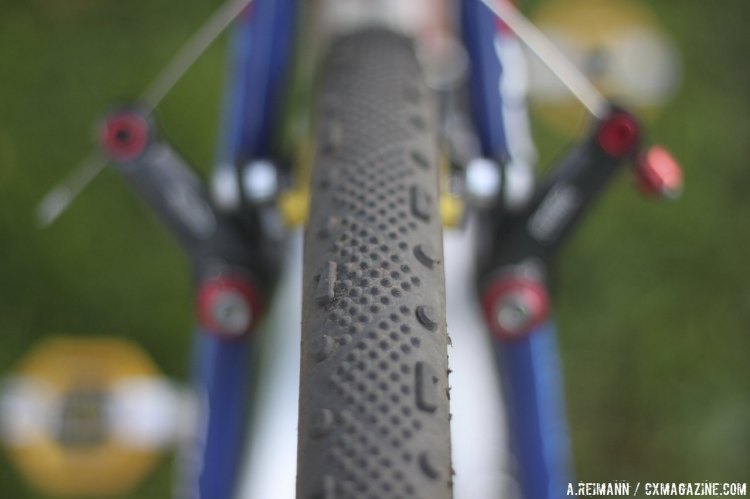
Hyde’s FMB SSC Sprint Tires carried him to victory on Day Two, and he proved that Avid Shorty Ultimate cantilever brakes were up to the task. © Andrew Reimann
Portland Bicycle Studio-branded FMB SSC Sprint Tires are hand-built in France, and are recognized by their unique file tread and side knobs, with every third knob having a slightly bigger bite on each side. Although they have a cotton sidewall, they don’t necessarily need Aquaseal if you’re in a rush as they already come with a light coat of latex for weather protection. Portland Bicycle Studio is a tire sponsor of the team and importer of FMB tubulars.
On a side note, FMB is also the tire choice of Jeremy Powers, who is hardly a stranger to winning UCI races. This makes two for two for FMB during the Men’s Elite Races at the KMC Cyclo-Cross Festival.
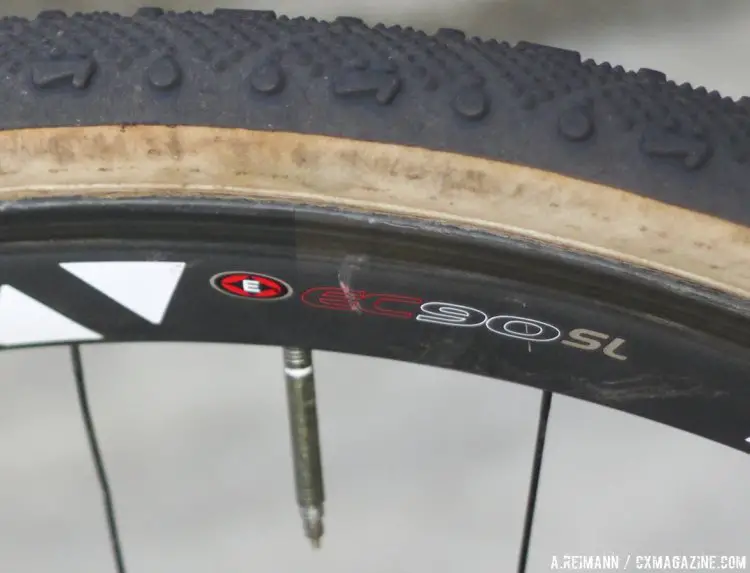
FMB’s Special Service Course Sprint tire, with cotton casing that is water resistant out of the box. © Andrew Reimann
The stem, seatpost and wheels are all Easton supplied, with the wheels being the older EC90SL wheels, which were made prior to Easton’s move to wider rims. While they’re not budget wheels, they’re certainly not a fancy only-available-to-the-pros prototype, and easily found nowadays on eBay for less than many alloy wheels.
Hyde’s Easton affordable aluminum EC70 stem looks to have a six degree drop, and instead of the increasingly popular method of reversing the barfly over the stem, Hyde keeps his Garmin out in front of the handlebars for easy visual accessibility.
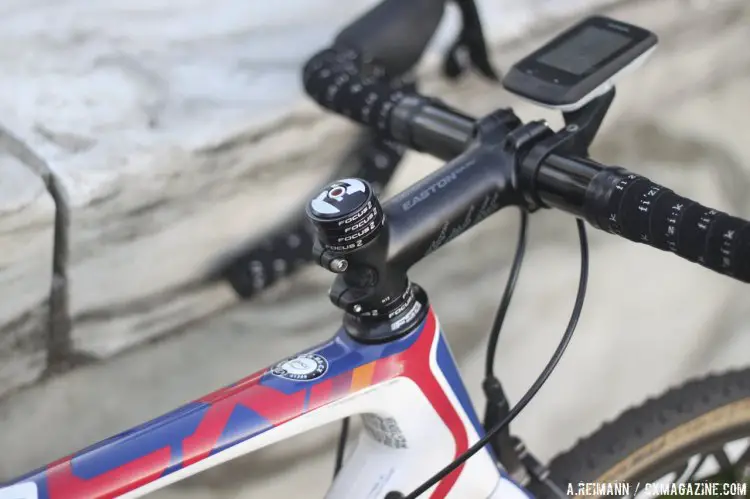
Hyde’s frame also labels the championship races that Focus has participated in, and if Hyde keeps these performances up, we can expect to see him at one soon. © Andrew Reimann
Want to know what an elite-level rider looks at if he even has the chance to look down during a race? Hyde displays a three-second power average, heart rate, cadence, and total elapsing time on his Garmin 510.
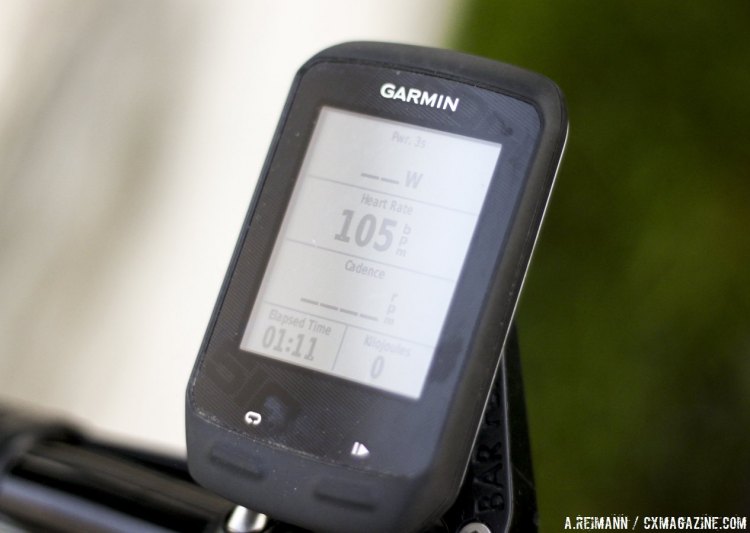
Hyde’s heart is understandably above 100bpm as he excitably waits in the podium tent before claiming the KMC trophy. © Andrew Reimann
With the borderline-exceptions of tires, computer and pedals, Stephen Hyde’s build fall squarely in the workingman’s category, and its mirror images can be seen all throughout the Cat3 fields and even ridden by ambitious riders in the beginner category races. This race certainly is not the first time a rider has won on tried-and-true technology, and it won’t be the last!
One of the most comparable builds you can get from Focus is their Mares CX 2.0 model, which still sports hydraulic disc brakes and the new Rival 22 drivetrain. Fully built, the 2015 bike retails for $3,050.
Stay tuned for more pro-bike profiles, including Elle Anderson’s newest ride, on cxmagazine.com.













